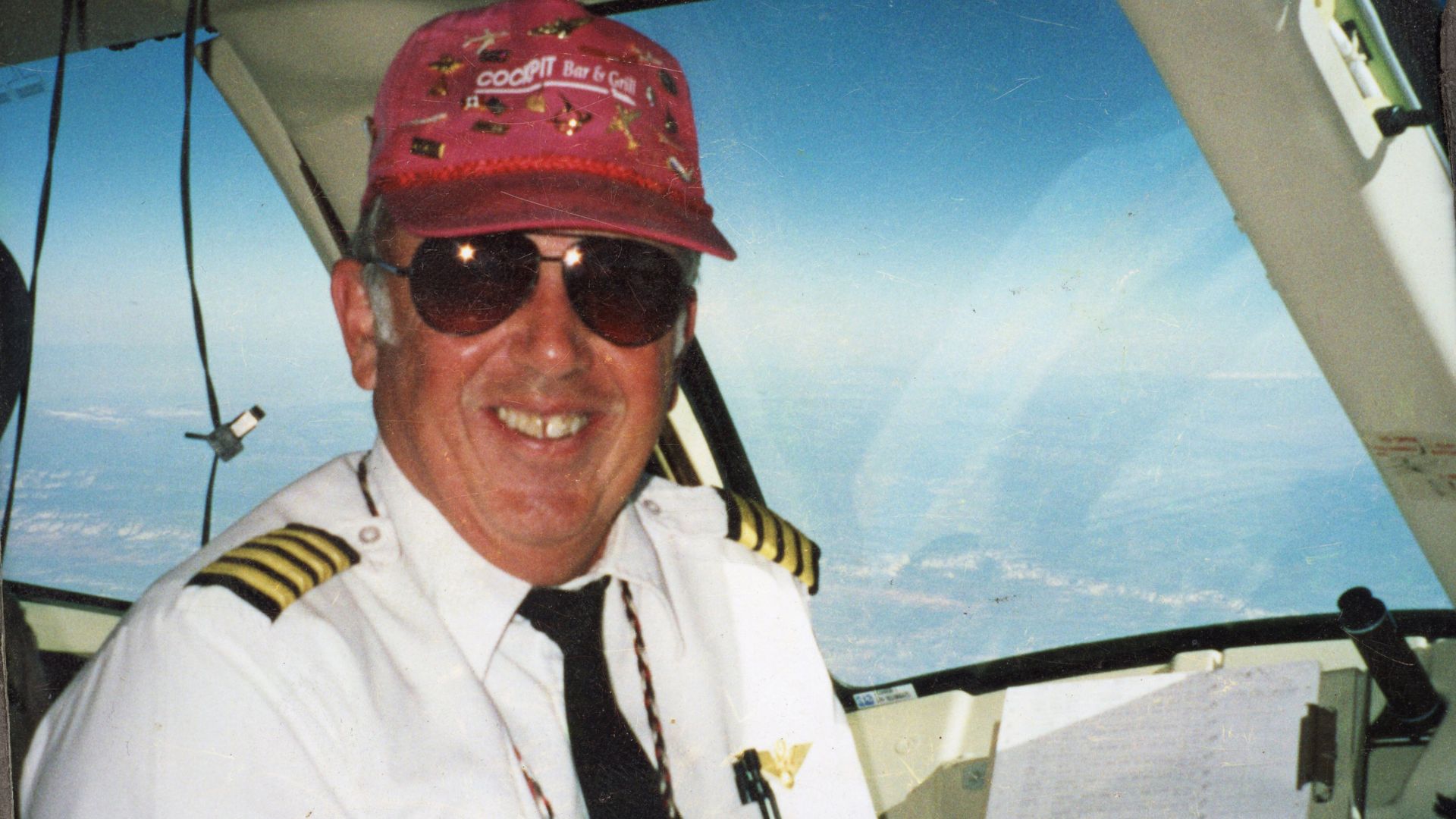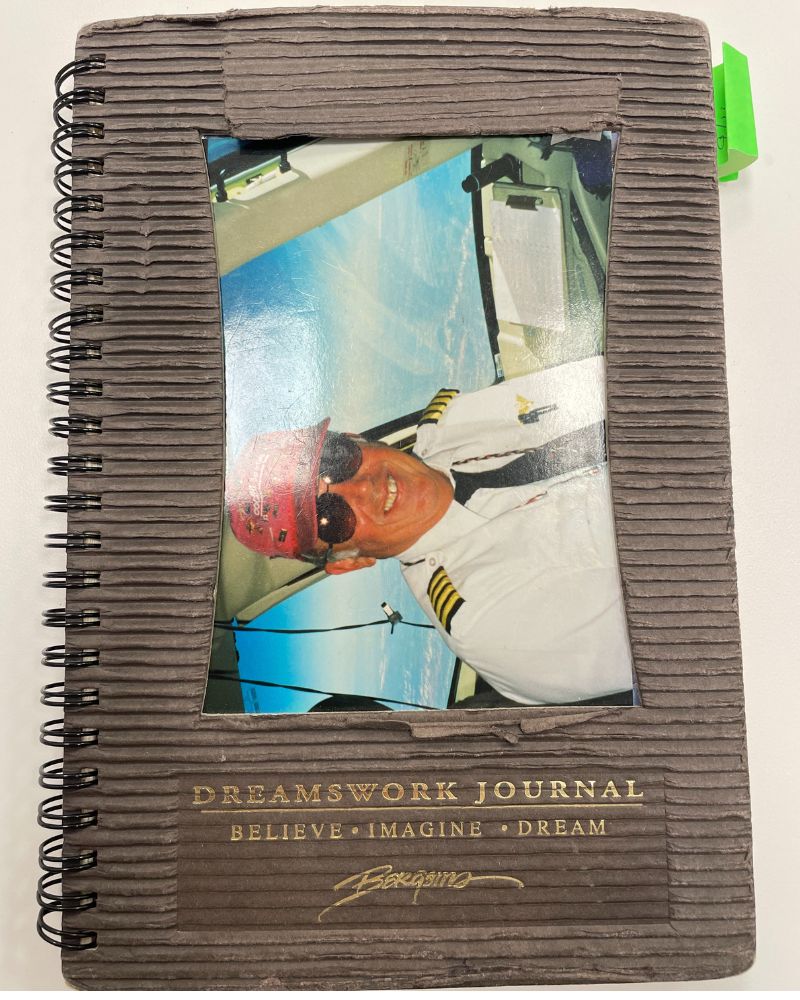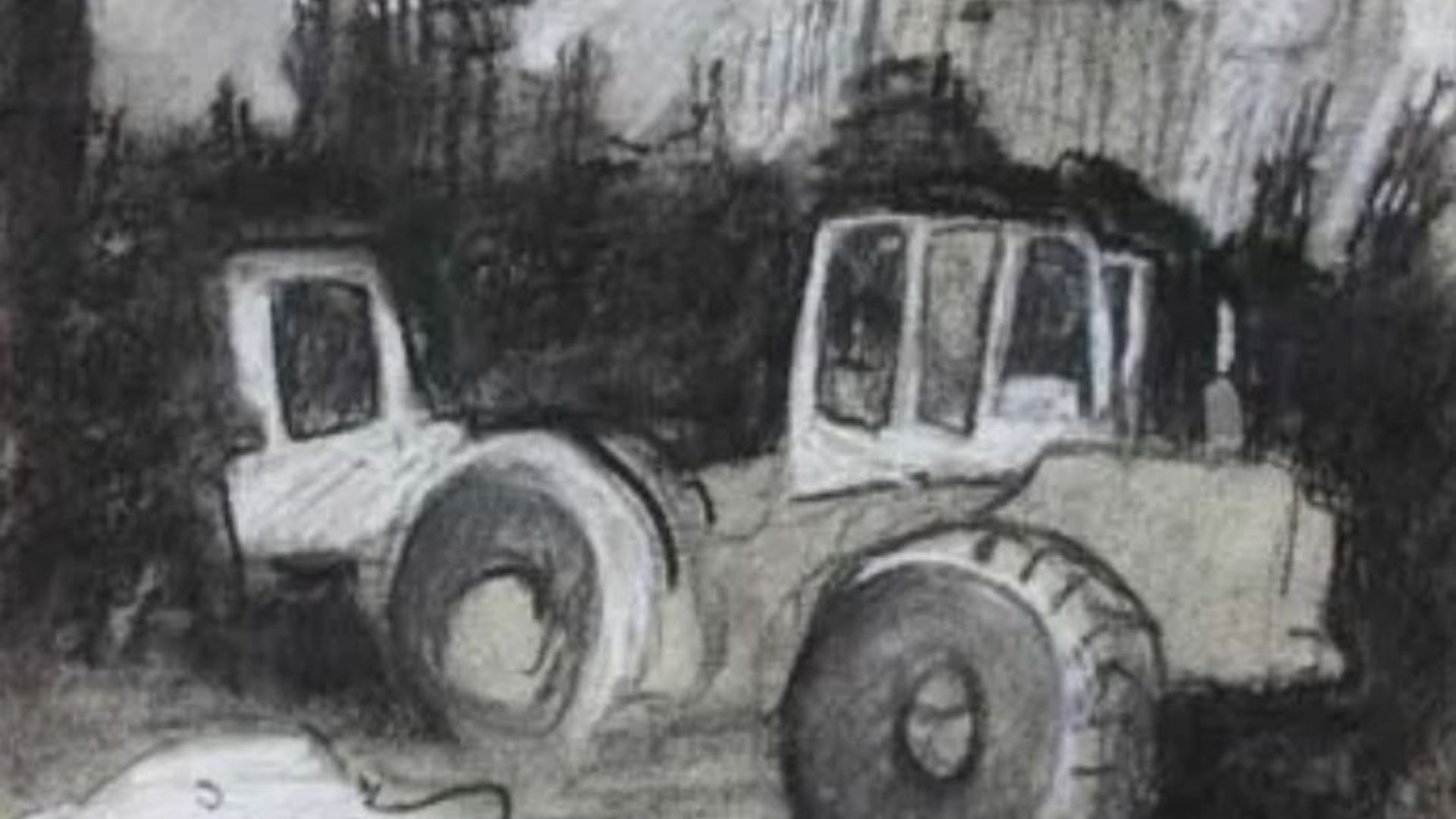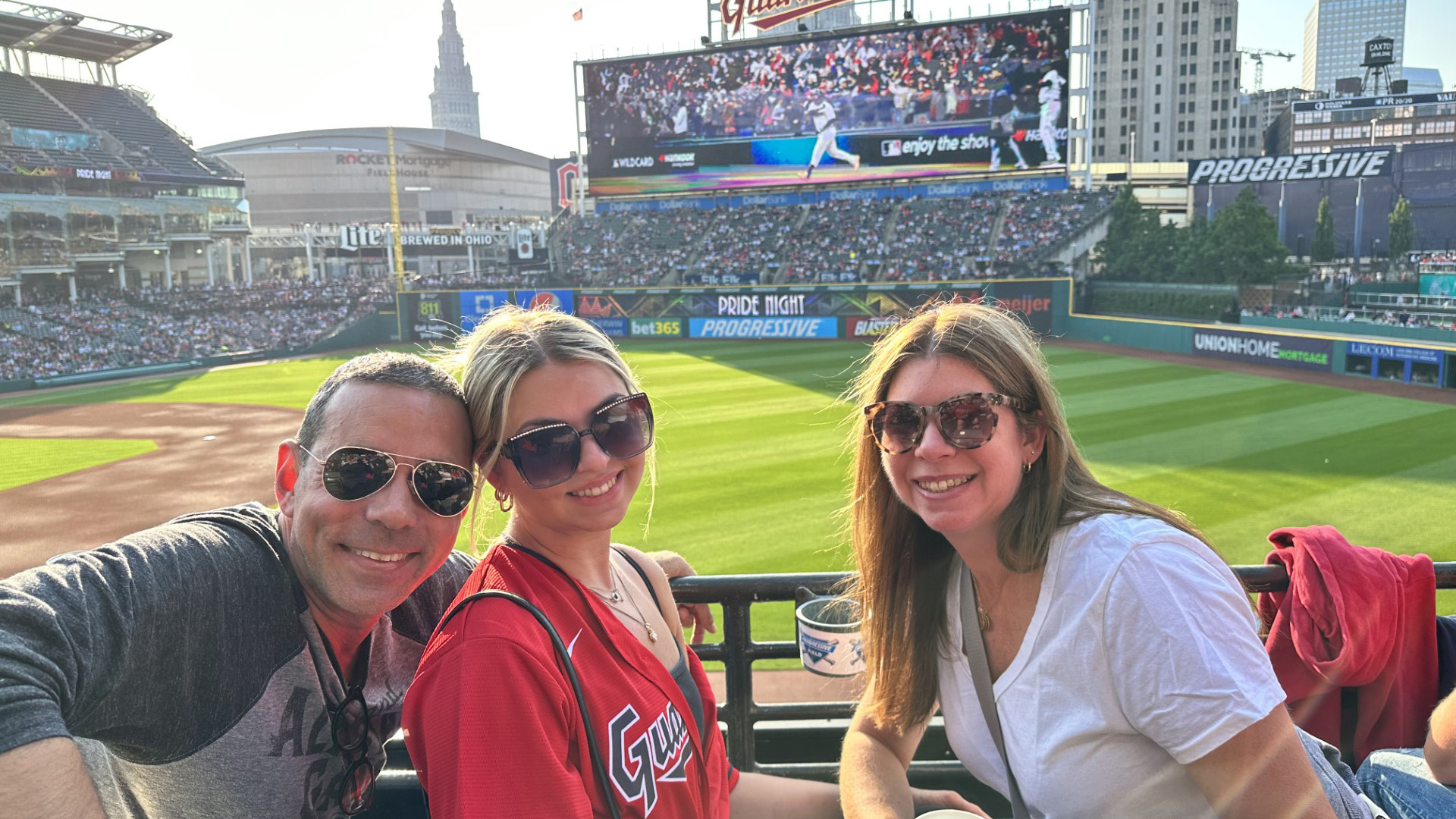National Aviation Week: Captain David Friel's Flight Journal
National Aviation Week: Captain David Friel's Flight Journal
- August 19, 2023

Captain David Friel
In 2022, David Friel, a former commercial and naval aviation pilot, donated his personal flight journal to the 9/11 Museum’s permanent collection. The fall of 2001 saw Friel completing the final weeks of his aviation career, serving as a Captain with Trans World Airlines (TWA). He started flying in May 1965, first gaining experience as a pilot for the United States Navy before transitioning to commercial aviation in the 1980s. However, by May 2000, Friel’s impending retirement inspired him to start maintaining a personal journal that detailed his professional background and the flights he piloted over the final eighteen months of his career.
On the morning of September 11th, 2001, Friel was assigned to fly from St. Louis to San Francisco, with a departure time of 8:35am CDT (9:35am EDT). While awaiting departure in the cockpit of his aircraft, Friel’s flight crew was alerted for the first time to the attacks at the World Trade Center. Noting in his journal that the sky was “clear all the way to the East Coast,” Friel and his First Officer struggled to make sense of how two separate airplanes could strike the New York City icons. On a piece of scratch paper taped inside of the journal, Friel scribbled the flight numbers of the four hijacked aircraft, their points of departure, and their intended destinations. Shortly thereafter, the FAA mandated that all flights be grounded, forcing Friel’s aircraft to standby on the tarmac for over two hours as other diverted flights made impromptu landings in St. Louis. While waiting, he tried many times to call his wife using a cell phone, but services were overwhelmed.

Once he and his crew finally deplaned, an airline union representative advised that they remove their uniforms due to fears that airline personnel themselves were terrorist targets. TWA ultimately provided Friel and other members of its flight crews with complimentary accommodations at an inn near the airport, in anticipation of the nationwide grounding being lifted for flights to resume. Friel remained in St. Louis for two days and nights before finally being cleared to fly home to Maryland on Thursday, September 13. Friel continued flying for TWA through October 17, 2001, which marked the final flight of his commercial aviation career. During the month between the attacks and his retirement, Friel recalled how several passengers thanked him for being brave enough to continue flying and wished him well on his post-piloting endeavors.
To learn more about David and the journal he kept on September 11th, please read his Q & A below:
What is the story behind your journal?
As I approached the end of my flying career (20 years in the US Navy and 17 years with TWA [Trans World Airlines]), I decided I wanted to leave more than some boring log books about my flying experiences. Log books typically note only the date, aircraft identification, flight time, and the instrument or visual flight conditions, along with to/from locations. A journal gave me the option to add things like the aircraft weight, number of passengers, name of the copilot and the ability to expand on any notable events that happened during a particular flight. For instance, on a flight from Portland, Oregon north to Anchorage, Alaska we saw the sun set below the horizon three times (Did that make me two days older?). As the events of 9/11 happened, I noted them so that I could relate my experiences of that day to my family and friends.
Why did you decide to donate the journal?
Around the 20th anniversary of 9/11, I wondered if my journal might contribute to a wider understanding of the events of that day, and how the events of 9/11 affected a peripheral participant (me). I visited the 9/11 Memorial & Museum in 2012 and was very impressed. In 2021, I thought that the Museum would be be interested in the journal. My family and some select friends agreed that my journal might have historical value and would be better utilized by a museum, rather than hidden away with family keepsakes. I volunteer as a docent with the 390th Memorial Museum, located at the Pima Air and Space Museum in Tucson, Arizona, and know firsthand how the personal stories of the men from the 390th Bomb Group have a great impact on our visitors.
What do you hope your journal tells people?
I hope it brings home to people that Americans felt threatened that day, no matter where we were – even at the center of our country in St Louis, MO [where I was].
Why is the Museum's role important to future generations?
Humans don't seem to learn well from studying the past, unless it’s presented with visual and auditory artifacts which relate directly to the ordinary human experience of a particular historical event. The 9/11 Memorial Museum preserves a comprehensive and in-depth depiction of how hatred can be so destructive to our common humanity.
Anything to add?
I hope the journal helps the 9/11 Memorial & Museum tell the story of 9/11 to a wider audience.
By Dylan Williams, Curatorial Assistant at the 9/11 Memorial & Museum
Previous Post
Anthony Graviano Depicts What Remains After Tragedy

Artist Anthony Graviano spent the immediate aftermath of 9/11 visiting Ground Zero and taking inspiration from the colossal remnants of the steel structures. His paintings convey the unusual spirit of unity generated by the attacks.
Next Post
College Senior Born on 9/11 in New York City Discusses Her Decision to Attend Law School

Caleigh Leiken, born September 11, 2001 in New York City, reflects on growing up in the wake of the terrorist attacks and coming of age in the pandemic. Today, the Ohio State senior plans to pursue a career in law, a path heavily influenced by the upheavals unique to her generation.